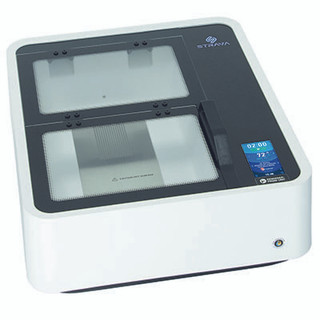Exploring the Utility of Medical Splinting Pans
Medical Splinting Pans are essential tools in the field of orthopedics and rehabilitation. They are specifically designed to create custom splints for patients with musculoskeletal injuries or conditions. These pans are instrumental in the fabrication process, allowing healthcare professionals to mold thermoplastic materials into personalized splints tailored to each patient's unique needs.
Who Utilizes Medical Splinting Pans?
- Orthopedic Specialists: Orthopedic surgeons, physiotherapists, occupational therapists, and other healthcare professionals involved in the treatment of musculoskeletal injuries frequently utilize medical splinting pans. These professionals rely on splints to immobilize and support injured limbs, promote healing, and facilitate rehabilitation.
- Rehabilitation Centers: Medical splinting pans are commonly found in rehabilitation centers, where patients receive comprehensive care and therapy following injuries, surgeries, or medical conditions affecting the bones, joints, or muscles. These facilities utilize splints to assist patients in regaining mobility, function, and independence.
- Hospitals and Clinics: Hospitals and outpatient clinics equipped with orthopedic departments or rehabilitation services utilize medical splinting pans to provide timely and effective splinting interventions for patients with acute injuries, fractures, or post-operative conditions.
Benefits of Using Medical Splinting Pans
- Customization: One of the primary advantages of medical splinting pans is their ability to create custom-fitted splints tailored to each patient's anatomy, injury type, and therapeutic goals. Healthcare professionals can mold thermoplastic materials directly onto the patient's affected area, ensuring optimal comfort, support, and immobilization.
- Precision and Control: Medical splinting pans offer healthcare providers precise control over the molding process, allowing them to achieve the desired degree of immobilization, alignment, and support. This precision is essential for promoting proper healing, reducing pain, and preventing complications associated with incorrect splinting techniques.
- Comfort and Compliance: Custom-fitted splints created using medical splinting pans are more comfortable for patients to wear compared to prefabricated or generic splints. The ability to tailor the splint's shape and fit to the individual patient's anatomy enhances comfort and encourages better compliance with wearing the splint as prescribed by healthcare providers.
- Versatility: Medical splinting pans can be used to fabricate a wide range of splint types, including immobilization splints, dynamic splints, protective splints, and functional splints. This versatility allows healthcare professionals to address various orthopedic conditions and rehabilitation needs effectively.
- Efficient Workflow: Medical splinting pans streamline the splinting process, allowing healthcare providers to create custom splints quickly and efficiently. This efficiency is particularly beneficial in emergency situations or busy clinical settings where timely interventions are crucial for patient care.
In summary, medical splinting pans are indispensable tools in orthopedic practice and rehabilitation settings, enabling healthcare professionals to create custom splints that meet the individualized needs of patients with musculoskeletal injuries or conditions. By offering customization, precision, comfort, and versatility, these pans contribute to optimal patient outcomes, promoting healing, mobility, and functional independence.
Related Blog Posts:
Medical Splints and Supports: Enhancing Patient Care in the Medical Field
A Guide to Understanding Manosplints
The Essential Role of Splint Pans in the Splinting Process
Recent Posts
-
Acupuncture vs. Dry Needling: What’s the Difference?
At first glance, acupuncture and dry needling might seem identical. Both involve inserting thin need …Jun 11th 2025 -
What Is Dry Needling? A Modern Approach to Pain Relief and Muscle Recovery
Chronic muscle pain, tension, and restricted movement can significantly impact your daily life, sign …Jun 11th 2025 -
The Kinetic Chain and Its Importance?
The kinetic chain is a key principle in physical therapy, referring to the way muscles, joints, and …Apr 18th 2025




